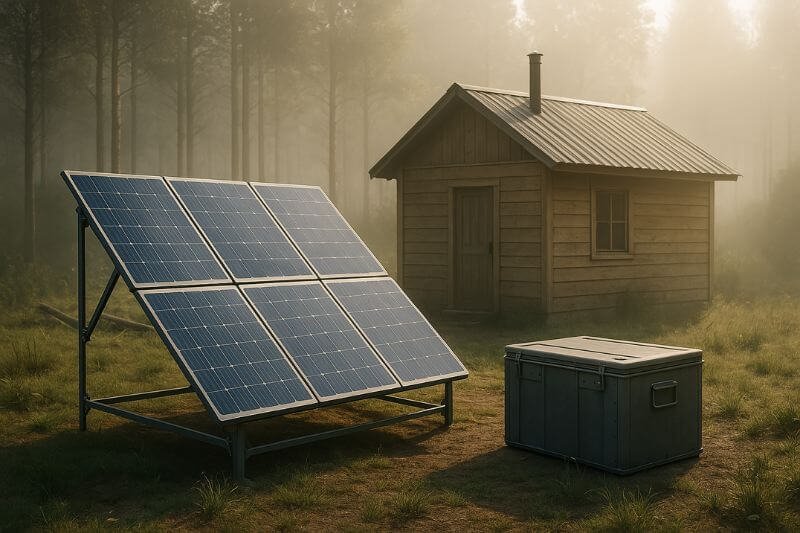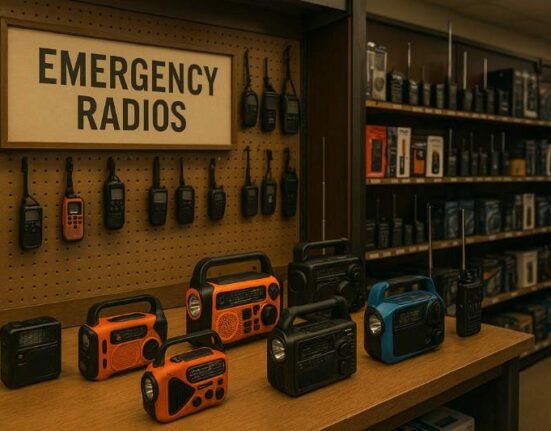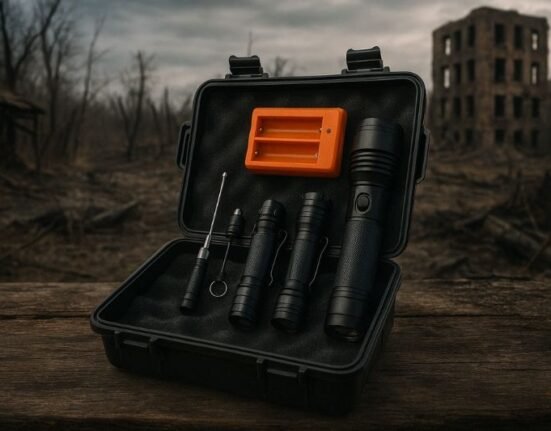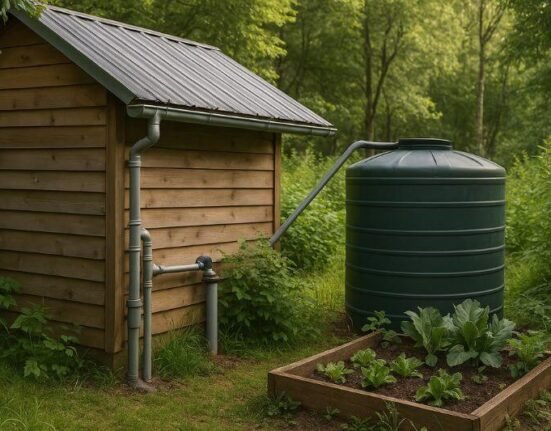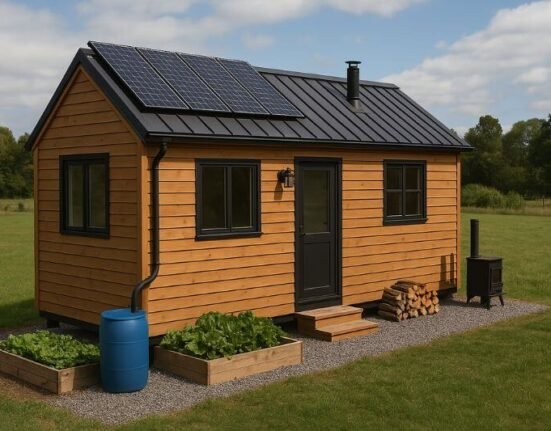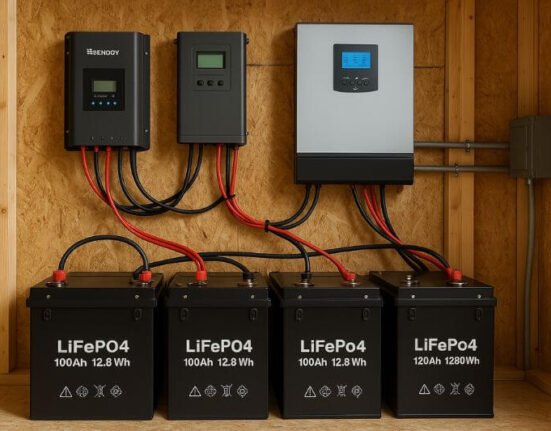In the world of off-grid survival, your energy system isn’t just a luxury — it’s your lifeline. It powers your communication, water pumps, refrigeration, lights, and essential tools. But many off-gridders discover too late that a single miscalculation or oversight can bring their system to its knees.
Avoiding off-grid energy mistakes isn’t about spending more — it’s about thinking smarter, planning realistically, and knowing what will drain your power before it does.
🔋 Part 1: Planning Errors That Doom Your Power Setup
🔍 Mistake #1 – Underestimating Your Real Energy Needs
Many first-time off-gridders size their solar setup for “a few lights and a fridge” — then add tools, fans, laptops, water pumps… and the system collapses.
🚫 What goes wrong:
- Solar panels can’t keep up
- Batteries drain too fast
- Inverters overheat or fail
✅ Fix it:
- List every device and its wattage + hours per day
- Calculate Watt-hours per day for real usage
- Add 30–50% buffer for cloudy days and system loss
“You don’t need a bigger system — you need a system that matches reality.”
🔌 Mistake #2 – Relying Too Much on AC (Alternating Current)
Most off-grid solar setups produce DC (direct current). Converting it to AC (for standard plugs) uses energy — and cheap inverters are notoriously inefficient.
🚫 Common drains:
- Running all lights on 120V instead of 12V
- Using AC fridges or TVs with inverter always on
- Inverters left running 24/7
✅ Fix it:
- Use 12V appliances where possible
- Install DC LED lighting directly off your battery bank
- Only run your inverter when absolutely needed
💡 Every conversion step = power loss. Keep it simple. Keep it DC.
☁️ Mistake #3 – Ignoring Weather and Sun Exposure
Your solar array may produce 800W on paper — but how much sunlight do you get in December? In rainy climates? Behind that tall tree?
🚫 What people overlook:
- Low winter angles = poor solar gain
- Partial shade = massive performance loss
- Snow and dust reduce panel output
✅ Fix it:
- Install your panels at adjustable tilt
- Clear them weekly (or after storms)
- Place in full sun from 9am–4pm if possible
- Consider hybrid systems (wind + solar) in cloudy regions
“Your power system needs to survive your climate, not your dream.”
🔋 Mistake #4 – Cheap or Mismatched Batteries
Not all batteries are created equal. Using car batteries or mixing old and new cells leads to failure — fast.
🚫 Battery mistakes:
- Using starter batteries instead of deep-cycle
- Mismatching battery voltages or capacities
- Not protecting against overcharge or deep discharge
✅ Fix it:
- Use sealed AGM, LiFePO4, or flooded deep-cycle batteries
- Install a smart charge controller
- Add a low-voltage disconnect to protect batteries
💡 Your battery bank is your fuel tank. Protect it like your life depends on it — because someday, it might.
⚙️ Part 2: System Overload, Mismanagement & Backup Failures
🔋 Mistake #5 – Poor Battery Maintenance and Abuse
Your battery bank is the core of your off-grid energy system. If your panels are the lungs, the batteries are your heart — and most failures come from not treating them like it.
🚫 Common mistakes:
- Letting batteries discharge too deeply below 50%
- Overcharging with no controller or cut-off
- Using mismatched batteries (old + new, or different types)
- No temperature regulation — leads to rapid degradation
✅ Solutions:
- Use charge controllers with temperature sensors
- Monitor daily voltage — don’t wait until the lights go out
- Stick to one battery chemistry (AGM, LiFePO4, or flooded — not all three!)
- Keep batteries ventilated and protected from cold
“Most battery banks fail not from age — but from abuse.”
🔄 Mistake #6 – No Load Management or Prioritization
One of the most dangerous off-grid energy mistakes is expecting your system to behave like a grid. It won’t. You need to actively manage what runs, when.
🚫 Signs of bad load management:
- Inverter trips every time you turn on a tool
- Batteries drain overnight because fridge + lights + fan stay on
- Running high-draw devices during cloudy days
✅ How to fix it:
- Create a daily energy use plan: what runs when?
- Use manual kill switches for non-essential items
- Prioritize loads:
- Critical: fridge, water pump, lights
- Comfort: fans, radios
- Non-essential: laptops, chargers, tools
💡 Consider installing DC load centers with timers to automate cutoffs.
“When the grid is gone, your choices define your uptime.”
🔌 Mistake #7 – Oversizing Inverters Without Thinking
Inverters convert your battery power into standard 110/120V AC — but the bigger the inverter, the more idle draw it uses even when nothing’s plugged in.
🧨 What goes wrong:
- You buy a 3000W inverter “just in case”
- It draws 50W/hour even idle
- Over 24 hours, that’s 1.2kWh wasted daily
✅ Inverter tips:
- Size your inverter to match your largest load, not your dreams
- Turn it off at night or when not in use
- Use dedicated smaller inverters (300W–600W) for daily use
- Install voltage shut-off triggers to protect your system
“A silent inverter can quietly kill your power.”
🧯 Mistake #8 – No Backup Energy Plan
Even the best systems fail. Storms happen. Panels crack. Batteries die. If you don’t have a Plan B, you’re gambling with your survival.
🔥 Backup options to consider:
- Portable solar generator (Goal Zero, Bluetti)
- Propane generator (quiet model with inverter tech)
- Pedal charger or hand-crank for USB
- Wind turbine if you’re in a breezy area
- Redundant battery bank (modular setup)
💬 What to keep powered at all times:
- Headlamp / lanterns
- Communication devices
- Water pump or manual alternative
- One emergency heating source (rocket stove, propane, etc.)
💡 Pre-charge a power bank rotation — swap daily so you never run dry.
🧰 Real-World Case: What Went Wrong in Colorado
“Tom & Ellie” built a beautiful off-grid tiny home in Colorado with:
- 2 x 100W solar panels
- 2 x lead-acid batteries
- 1000W inverter
- DC fridge, lights, fan
But winter came.
❌ What happened:
- Panels produced only 30–50W/day in snow
- Batteries dropped below 11V from fridge draw
- Inverter left on overnight
- No backup power — no lights, no fridge, no pump
They spent 5 days with no power, relying on candles and snowmelt.
✅ Lessons learned:
- Use angled panels and clean them often
- Build winter margin into your watt-hours
- Shut down all non-critical loads at night
- Always have a backup light and heat source
“They didn’t fail from lack of gear — they failed from trusting the wrong plan.”
🛠️ Part 3: Building Resilience Into Your Energy System
✅ Best Practices for Designing a Fail-Proof Off-Grid Setup
Off-grid success isn’t about having the biggest panels or the most expensive batteries — it’s about balance, awareness, and planning for failure before it happens.
🔧 Design checklist:
- 🔋 Battery-first approach: Size storage before generation
- ☀️ Oversize your solar array by 25–40% for winter months
- 🔄 Use low-voltage DC wherever possible
- 🧰 Install battery monitors and charge controllers with smart readouts
- ⚠️ Keep manual overrides and fuses accessible and labeled
💡 Modular = flexible. Build in stages and test each layer.
🧮 Load Planning & Power Budgeting
Even if your system can power something — doesn’t mean it should.
Sample Daily Load Calculation (Essentials Only):
| Device | Watts | Hours/Day | Watt-Hours |
|---|---|---|---|
| LED lights | 20 | 5 | 100 |
| DC fridge | 60 | 12 | 720 |
| Water pump (12V) | 60 | 0.5 | 30 |
| Phone + radio | 10 | 4 | 40 |
| Inverter idle draw | 30 | 8 | 240 |
| Total | 1130 Wh/day |
👉 A 400W solar array in full sun = ~1600Wh/day in summer
In winter, that drops to 700–900Wh/day — your system must match your worst-case day, not your best.
🧽 Seasonal Maintenance Routine
Survival means preventing problems before they start. Each season brings new stress to your system.
🔄 Monthly tasks:
- Check battery voltage and specific gravity (if flooded)
- Clean panel surfaces
- Tighten wire terminals and inspect for corrosion
- Test inverter auto shut-off and LVD settings
🧊 Winter prep:
- Tilt panels steeper (45–60°) to shed snow
- Insulate battery bank (but ventilate!)
- Pre-charge power banks
- Stock propane or rocket fuel
“The system doesn’t have to be perfect — just maintained.”
❌ Top 10 Off-Grid Energy Mistakes to Avoid (Summary)
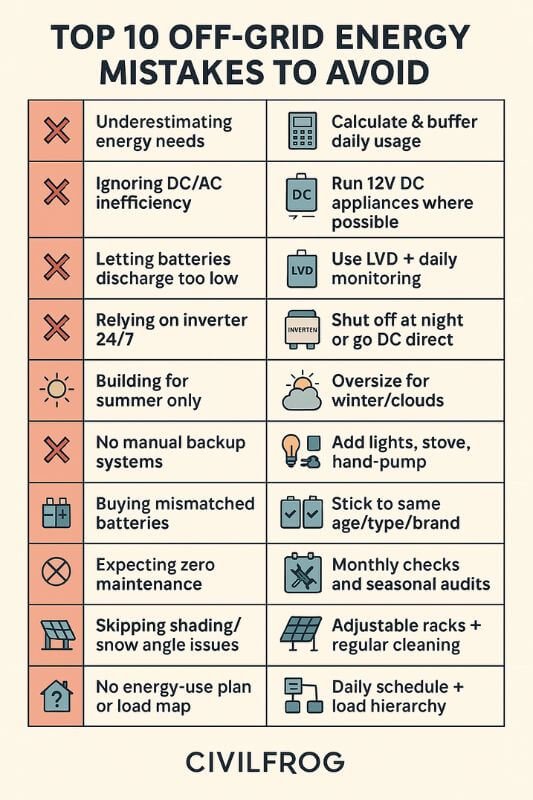
| Mistake | Solution |
|---|---|
| Underestimating energy needs | Calculate and buffer daily usage |
| Ignoring DC/AC inefficiency | Run 12V DC appliances where possible |
| Letting batteries discharge too low | Use LVD + daily monitoring |
| Relying on inverter 24/7 | Shut off at night or go DC direct |
| Building for summer only | Oversize for winter/clouds |
| No manual backup systems | Add lights, stove, hand-pump |
| Buying mismatched batteries | Stick to same age/type/brand |
| Expecting zero maintenance | Monthly checks and seasonal audits |
| Skipping shading/snow angle issues | Adjustable racks + regular cleaning |
| No energy use plan or load map | Daily schedule + load hierarchy |
❓ Frequently Asked Questions (FAQ) – Off-Grid Energy Systems
Q: How many solar panels do I need to run a cabin off-grid?
There is no one-size-fits-all answer — your needs depend on what you want to run, where you live, and what your climate allows.
🧮 Basic Rule of Thumb:
- Minimalist setup (lights, USB devices, water pump):
→ 2 x 200W solar panels (in summer or full sun climates)
→ Add a 200Ah battery bank minimum - Standard setup (fridge, lights, fan, tools):
→ 4 to 6 panels (100W–200W each)
→ At least 400Ah of deep-cycle battery storage
🌥️ Always Oversize:
In survival planning, don’t build for the best day — build for the worst. Cloudy winters and shaded terrain can cut your output by 40–70%. If your panels provide enough power only in July, you’ll freeze in January.
“A system that barely works in summer becomes a liability in winter.”
🧰 Tools to Help:
- Watt-hour calculator (many free online tools)
- Solar pathfinder apps to measure daily sun hours
- Start with usage logs: how many watts/day do your devices need?
Q: What’s the best battery type for long-term survival?
Your batteries are where all your collected energy lives. Choosing the wrong ones — or managing them poorly — is one of the most damaging off-grid energy mistakes.
Here’s a breakdown of common options:
| Type | Pros | Cons |
|---|---|---|
| LiFePO4 (Lithium Iron Phosphate) | • Long lifespan (3000–5000 cycles) | |
| • Lightweight | ||
| • Fast charging | ||
| • Deep discharge allowed (up to 90%) | • Expensive upfront | |
| • Sensitive to cold (needs insulation) | ||
| AGM (Absorbed Glass Mat) | • Maintenance-free | |
| • Good performance in moderate climates | ||
| • Spill-proof and safe | • Lower cycle life than lithium | |
| • Less tolerant to deep discharge | ||
| Flooded Lead-Acid | • Cheapest option | |
| • Easy to find worldwide | ||
| • Simple to wire | • Requires regular water checks | |
| • Needs ventilation | ||
| • Shorter lifespan if not maintained well |
🔌 Important Tips:
- Never mix battery types in the same bank.
- Protect all batteries from extreme cold or direct sun.
- Use a battery monitor or charge controller with real-time voltage readings.
- Replace all batteries at the same time, not one by one.
“In off-grid survival, your battery bank is your fuel tank. Don’t cut corners.”
Q: Can I run power tools off-grid?
Yes — but with limits.
Power tools are among the most energy-hungry devices in a survival setting. Unless you have a large battery bank and inverter, you’ll need to treat them as intermittent-use items — not daily drivers.
🛠️ 3 ways to power tools off-grid:
- Solar Generator (Portable AC)
- Best for drills, grinders, saws
- Choose a model with >1000W output (Goal Zero, EcoFlow, Bluetti)
- Recharge during the day, use in short bursts
- Dedicated Inverter + Deep-Cycle Battery Bank
- Build a modular DC system with a 1500W–3000W inverter
- Ideal for off-grid construction projects or homestead repairs
- Must be sized to handle surge wattage (startup load)
- Manual & Hand Tools
- Old-school carpenter saws, axes, brace-and-bit drills
- Zero draw, reliable in all weather
- Excellent backup when the system is offline
⚠️ Caution:
- Always check the surge power rating of your inverter
- Don’t run tools at night or in low-battery conditions — this can damage both the tool and the power system
“In survival, the tool that doesn’t need charging is often the most reliable one.”
Q: What happens if my panels stop producing during a storm?
This is one of the most realistic failure scenarios — and also one of the most ignored. Storms, snow, or even heavy smoke from wildfires can drastically reduce or completely block solar input.
If this happens and you haven’t planned for it, your system will crash.
🚫 What most people forget:
- Solar panels can go from 100% to 0% output in minutes
- Even a few shady days in a row can fully drain batteries
- Snow-covered panels = no power for days
✅ What to do instead:
🔋 1. Battery Reserve
- Always maintain at least 2 full days of energy in your battery bank
- This means enough storage to run your core systems (lights, water pump, radio) without charging
🔁 2. Backup Sources
- Propane generator with clean inverter output (for fridge, lights, or tools)
- Wind turbine if you’re in a gusty area
- Crank-chargers or bike-powered dynamos for USB and lights
- Power banks rotated every 1–2 days
🧊 3. Prepare Passive Alternatives
- Use gravity-fed water systems
- Keep solar lanterns and candles for backup lighting
- Install a rocket stove or wood burner for heat and cooking
“It’s not the storm that ruins the system — it’s the lack of a fallback plan.”
Final Thoughts
In an off-grid lifestyle — whether temporary or long-term — your power system is only as strong as your weakest assumption.
- Don’t guess your loads — measure them.
- Don’t trust perfect days — prepare for the storm.
- Don’t wait for failure — design for resilience from day one.
Even the most advanced setup can fail if the basics are ignored. But with smart planning, daily awareness, and a dose of realism, your off-grid energy system can carry you through blackouts, storms, and long-term collapse — without ever leaving you in the dark.
✅ Conclusion: Energy That Won’t Let You Down
Avoiding off-grid energy mistakes is about more than watts and wires — it’s about system thinking. Your power setup should be resilient, repairable, and ready to carry you through the darkest days — literally.
Don’t build for the sunniest week.
Build for the coldest, greyest, worst-case scenario.
Because when the grid dies, your system stays — or you do.









